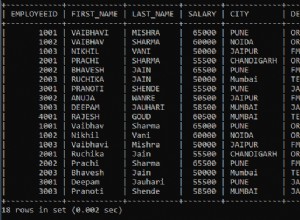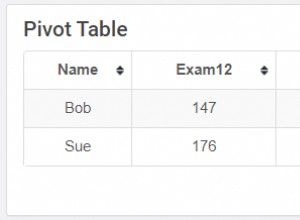Dal mio punto di vista, dovresti usare una sequenza e smettere di preoccuparti delle lacune.
Dal tuo punto di vista, direi che alterare la sequenza è peggiore che avere un tavolo. Tieni presente che l'accesso a quella tabella deve essere limitato a un singolo utente, altrimenti otterrai valori duplicati se due (o più) utenti vi accedono contemporaneamente.
Ecco un codice di esempio; dai un'occhiata, usa/regola se vuoi.
SQL> create table broj (redni_br number not null);
Table created.
SQL>
SQL> create or replace function f_get_broj
2 return number
3 is
4 pragma autonomous_transaction;
5 l_redni_br broj.redni_br%type;
6 begin
7 select b.redni_br + 1
8 into l_redni_br
9 from broj b
10 for update of b.redni_br;
11
12 update broj b
13 set b.redni_br = l_redni_br;
14
15 commit;
16 return (l_redni_br);
17 exception
18 when no_data_found
19 then
20 lock table broj in exclusive mode;
21
22 insert into broj (redni_br)
23 values (1);
24
25 commit;
26 return (1);
27 end f_get_broj;
28 /
Function created.
SQL> select f_get_broj from dual;
F_GET_BROJ
----------
1
SQL> select f_get_broj from dual;
F_GET_BROJ
----------
2
SQL>




